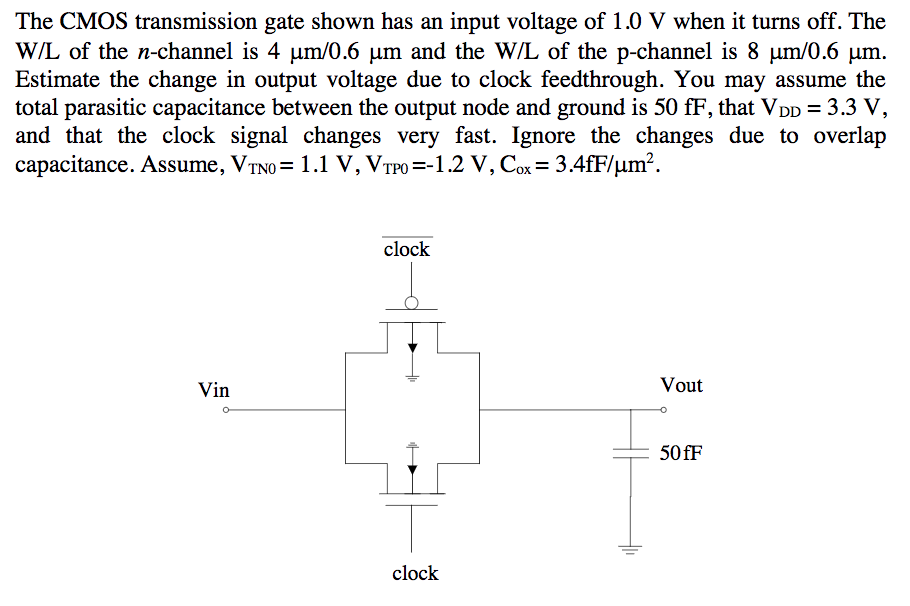The CMOS transmission gate shown has an input voltage of 1.0 V when it turns off. The W/L of the n-channel is 4 μm/0.6 μm and the W/L of the p-channel is 8 μm/0.6 μm. Estimate the change in output voltage due to clock feedthrough. You may assume the total parasitic capacitance between the output node and ground is 50 fF, that VDD = 3.3 V, and that the clock signal changes very fast. Ignore the changes due to overlap capacitance. Assume, VTN0 = 1.1 V, VTP0 = −1.2 V, Cox = 3.4 fF/μm2.
